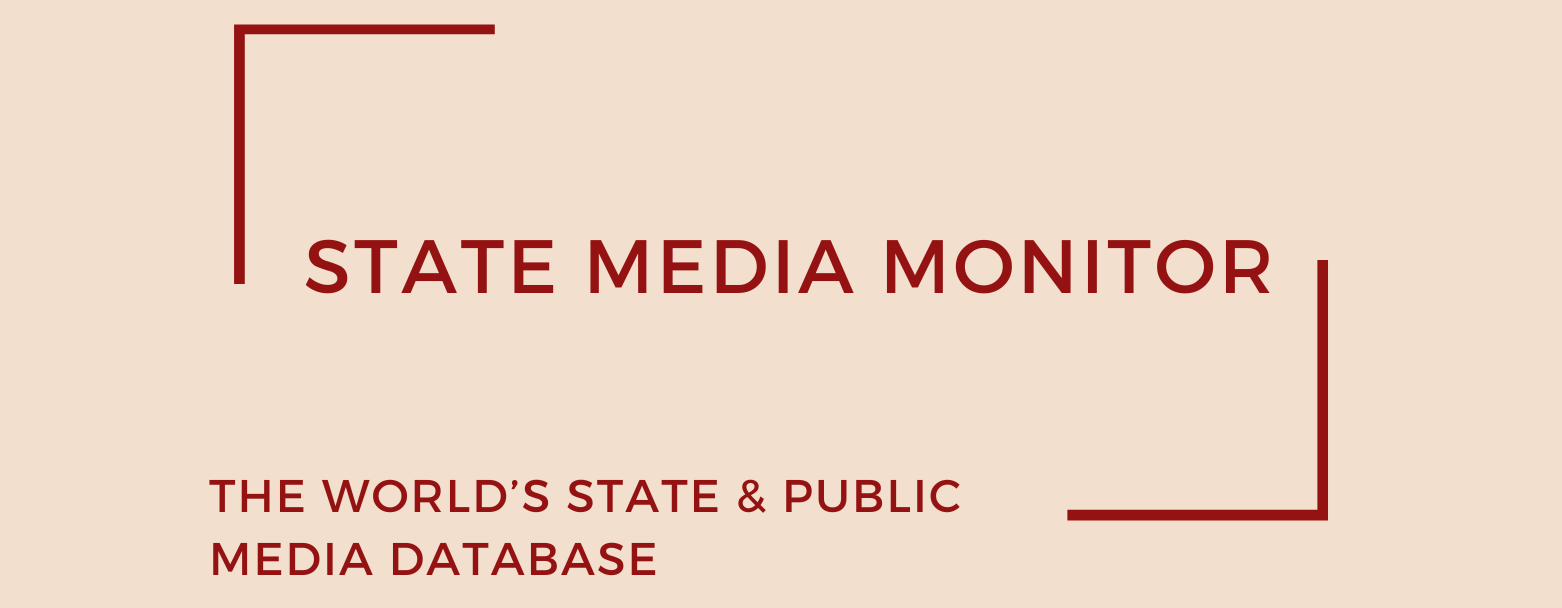Rwanda Broadcasting Agency (RBA)
The Rwanda Broadcasting Agency (RBA) is the national public broadcaster of Rwanda, operating a flagship television channel and a network of eight radio stations across the country. It also oversees the Parliament Radio Station, dedicated to broadcasting legislative sessions and civic affairs. Formerly known as Office Rwandais d’Information (ORINFOR), the organization was restructured and rebranded as RBA in 2013 under Law No. 42/2013, with the intent to modernize Rwanda’s public service media landscape.
Media assets
Television: Rwanda Television 1, KC2 TV
Radio: Radio Rwanda, Radio Inteko, Magic FM, Radio Musanze, Radio Rusizi, Radio Huye, Radio Nyagatare, Radio Rubavu
State Media Matrix Typology
Ownership and governance
RBA was created to succeed ORINFOR as a more independent and publicly accountable entity, though the extent of that independence remains a subject of debate. According to Law No. 42/2013, the Rwandan state retains a 20% ownership stake in the agency, with the remaining 80% held by unnamed private investors. The lack of transparency surrounding these investors has drawn scrutiny, with local journalists and civil society actors alleging that the ownership is closely tied to business interests aligned with the ruling Rwandan Patriotic Front (RPF).
RBA is overseen by a seven-member Board of Directors, including a Chair and Deputy Chair, all appointed by Presidential Order following Cabinet approval. While the appointment process is legally mandated to be transparent, in practice, it is perceived as tightly controlled by the executive branch. The Board reports to the Ministry of Local Government (MINALOC), which plays a supervisory role in governance and policy direction.
In a significant leadership change, President Paul Kagame appointed journalist Cleophas Barore as Director General of RBA in December 2023, succeeding Arthur Asiimwe, who was reassigned as Rwanda’s ambassador to the United States. Barore previously served as the Chair of the Rwanda Media Commission, raising both hopes and concerns about continuity and reform in editorial leadership.
Source of funding and budget
RBA operates on a hybrid funding model, drawing resources from both state subsidies and commercial advertising revenue. While the government’s 2013 reform aimed to gradually wean the broadcaster off public funding, in practice, RBA remains heavily reliant on state support.
According to Rwanda’s 2024 national budget, the broadcaster received RWF 4.75 billion (approx. US$ 4.45 million) in direct government subsidies. This marks a modest increase from the RWF 2.7 billion allocated in 2020 but still lags behind the RWF 4.71 billion disbursed in 2019. Much of the funding continues to be earmarked for infrastructure development and equipment upgrades.
In addition to public funding, RBA commands a disproportionate share of government advertising, which has drawn criticism from private media outlets who argue that this dual-source financing gives the outlet an unfair advantage in an already constrained media market. There is no publicly available breakdown of how much state advertising RBA receives, nor does the agency disclose the overall proportion of public versus commercial revenue in its annual budget. Observers suggest that public funds remain the cornerstone of RBA’s operations.
In May 2025, independent media outlets (especially community radio stations) faced an accumulating debt crisis tied to RBA’s mast rental fees. As of early 2023, arrears had reached approximately RWF 1.5 billion, and by mid-2025 smaller broadcasters—over 40% of Rwanda’s stations—were earning less than RWF 5 million yearly. To enforce payment, RBA issued multiple warnings and threats of transmitter disconnection, potentially jeopardizing the operation of these community media outlets.
Editorial independence
RBA’s founding statute explicitly affirms its editorial independence, and the outlet was initially envisioned as a counterweight to the government mouthpiece ORINFOR. Nevertheless, critics argue that RBA continues to operate under the shadow of the state, often amplifying official narratives rather than providing critical, independent journalism.
Content analyses conducted by local media watchdogs and international observers consistently show that RBA coverage tends to reflect the government’s viewpoint, particularly during sensitive political moments. News content frequently exhibits a deferential tone toward public officials and state institutions, with limited space allocated to dissenting voices or civil society perspectives.
The debt-related mast rental enforcement raised fears of indirect control over smaller, financially fragile broadcasters, potentially exacerbating self-censorship across the sector.
Although RBA was expected to adopt its own Editorial and Production Guidelines to enshrine core values such as impartiality, pluralism, and transparency, there is no public record confirming the adoption or implementation of such a framework as of mid-2025.
While the National Electoral Commission (NEC) reported balanced coverage by RBA during the 2017 presidential elections, and the Office of the Ombudsman has the formal power to review complaints, there is no independent media regulator or external oversight body regularly auditing RBA’s editorial performance. This absence leaves a critical gap in accountability, particularly in an environment where press freedom is already tightly constrained.
June 2025
Citation (cite the article/profile as part of):
Dragomir, M. (2025). State Media Monitor Global Dataset 2025.
Media and Journalism Research Center (MJRC).
Zenodo.
https://doi.org/10.5281/zenodo.17219015
This article/profile is part of the State Media Monitor Global Dataset 2025, a continuously updated dataset published by the Media and Journalism Research Center (MJRC).
